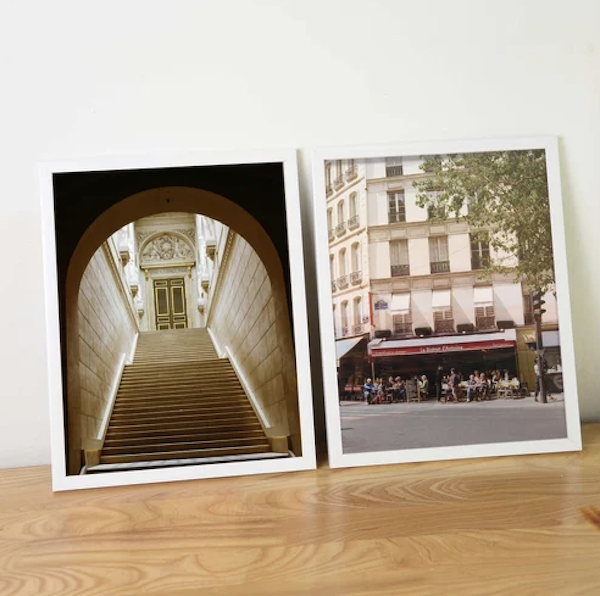Photography has always been a medium through which we capture memories, tell stories, and express our artistic visions. In celebration of World Photography Day, let's compare the old with the new, the two great forms of photography: digital and film. To illustrate these differences, I've taken photos of some of Paris's most iconic spots, both on digital and film, and placed them side by side for comparison.
The Resurgence of Film Photography
Film photography is still used today and has experienced a resurgence in recent years. Many photographers are drawn to the allure of vintage charm and the nostalgia of analog processes. They appreciate the original forms of photography, often using digital and film in conjunction with each other. Here are some key aspects that set film apart:
- Color and Tone: Film often has a unique color palette and tonal range, giving images a distinct look that many describe as "organic" or "timeless." Drawn to the allure of vintage charm and the nostalgia of analog processes, film photographers obsess over vibrant hues, captivating shadows, and the transient beauty of fleeting moments.
- Grain: The grain in film can add texture and depth to a photograph, contributing to its character. Some photographers appreciate the more organic feel of the photo as it creates an artistic effect. “Grain makes a photo a little bit less visible, a little less clear— just like our personal memories, thoughts, and nostalgia from the past.” - Erik Kim
- Dynamic Range: Film can capture a wide range of light and shadow, often handling highlights and lowlights with more nuance and cinematic flair.
- Process: The process of shooting with film, including the development stage, can be more deliberate and meditative, encouraging photographers to think more carefully about each shot.
As film photography forces the photographer to slow down and appreciate the process of taking a photo, one may usually find oneself constantly looking around, not just straight ahead, seeking those special pockets of light and ephemeral scenes.
The Advantages of Digital Photography
Digital photography, on the other hand, offers its own set of benefits that have revolutionized the way we take pictures:
- Convenience: Digital cameras allow for instant review and editing, making it easier to get the perfect shot.
- Flexibility: With digital, you can shoot thousands of photos without worrying about running out of film.
- Post-Processing: Digital images can be easily edited and enhanced using software, providing endless creative possibilities.
- Cost-Effective: Once you have a digital camera, you don't need to keep buying film and paying for development, making it more economical in the long run.
Side-by-Side Comparisons
Let's take a look at some side-by-side comparisons of digital and film photos of the same scenes in Paris.
A Couple at the Eiffel Tower

Both photos are in black and white, but there are notable differences. Shooting portrait photos at night with a film camera often requires a flash because film has a certain limitation with ISO compared to most modern digital cameras which can achieve an ISO of over 5000.
The digital shot, on the other hand, was taken without flash and later brightened in post-processing. This is achievable thanks to the high megapixel count, which makes it easier to edit and brighten the couple. Additionally, the advanced lens quality in modern digital cameras allows for a soft blur effect, keeping the Eiffel Tower more in focus, while the film photo captures the scene with a more pronounced blur in the background.
The Bistrot

The colors in the film photo of the bistro appear more faded, vintage, and nostalgic, giving it a timeless feel. In contrast, the digital photo has more contrast, with darker shadows and more precise colors, showcasing the scene with sharp clarity and detail.
Whatever method of photography you choose, art is about your perspective, and how that perspective elicits emotions from people around you. Most, if not all, photographers try to share a little piece of themselves in every photo they shoot. For some, it's not just about capturing an image; it's about capturing the piece of themselves that they want to show to others.
